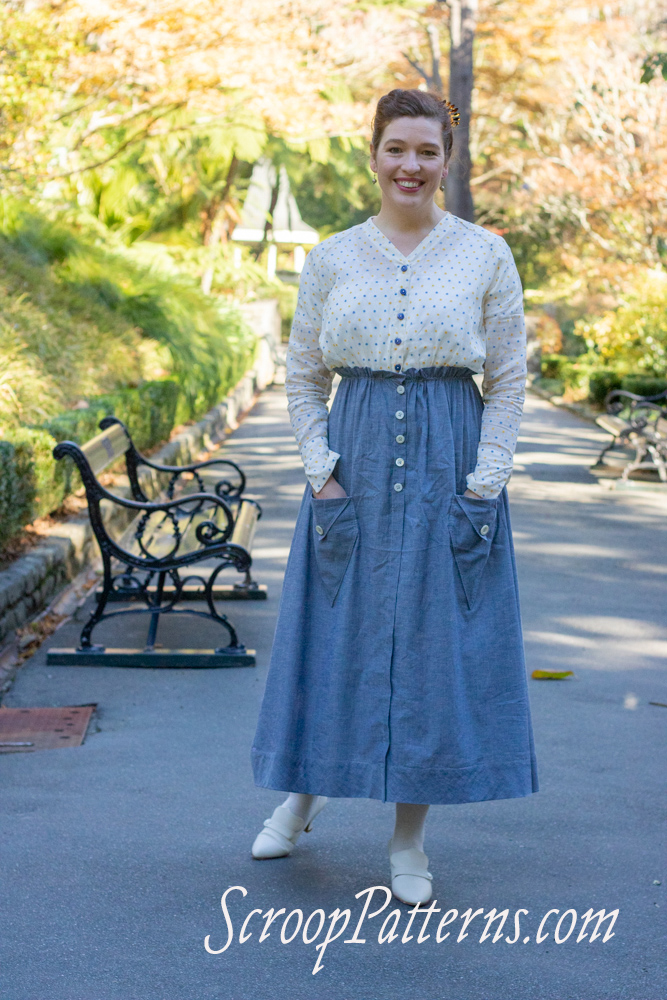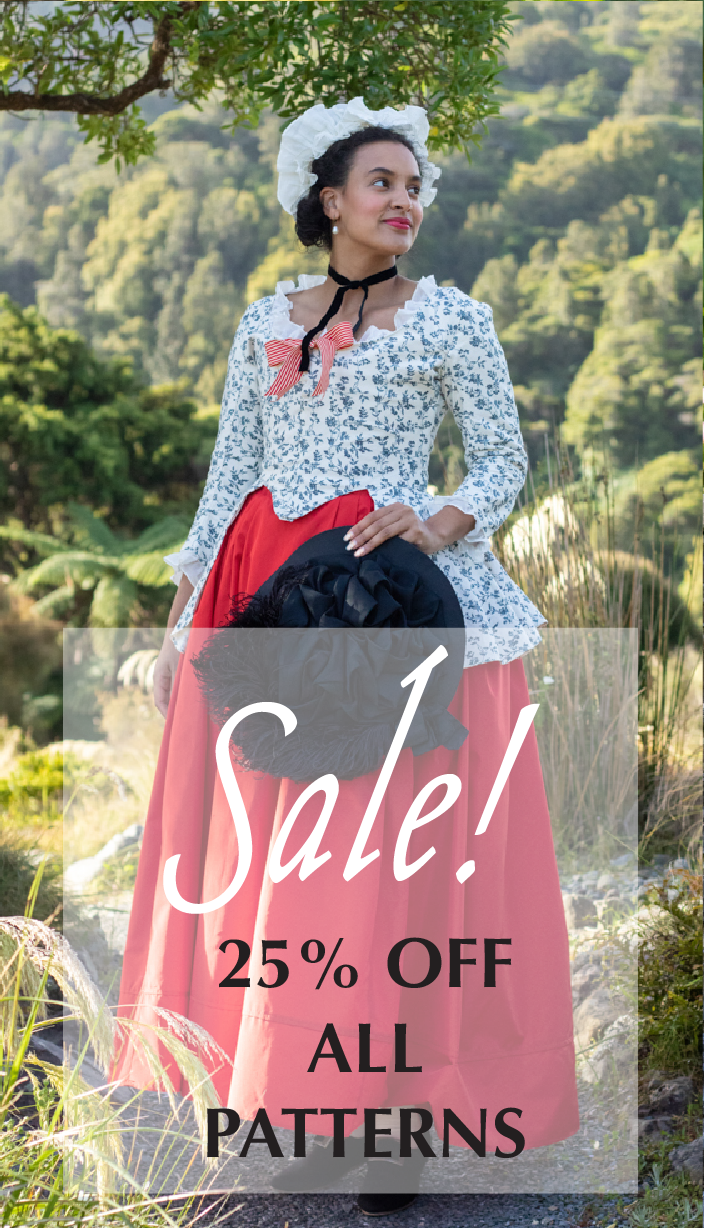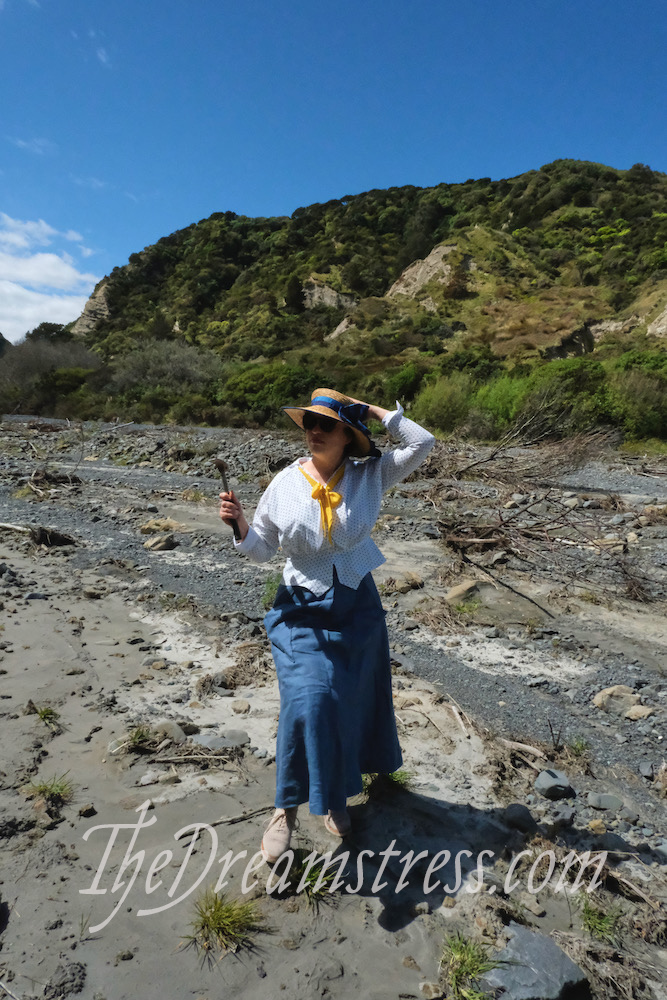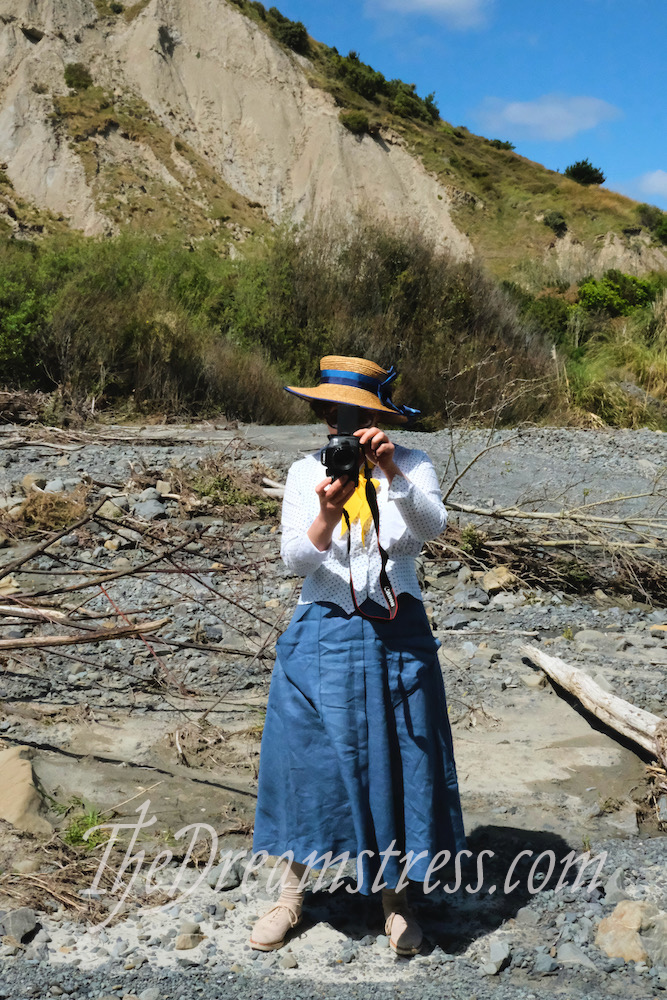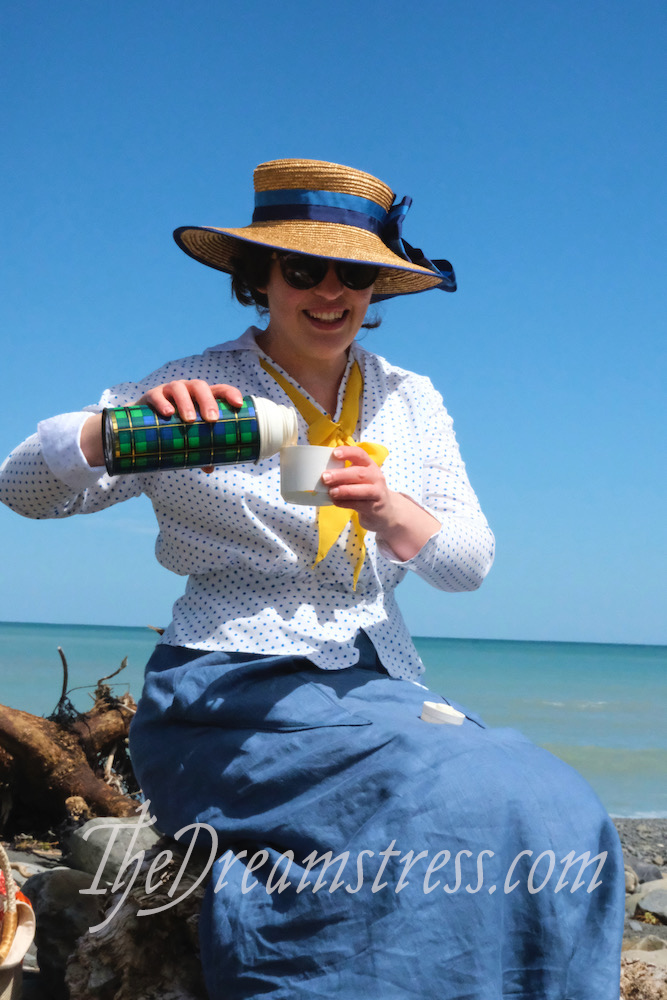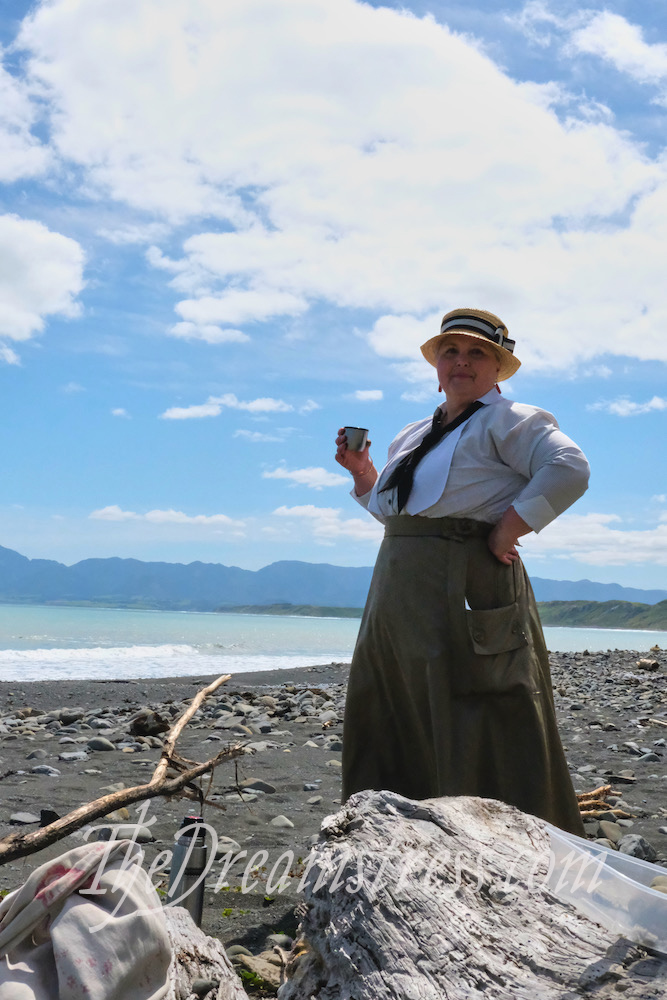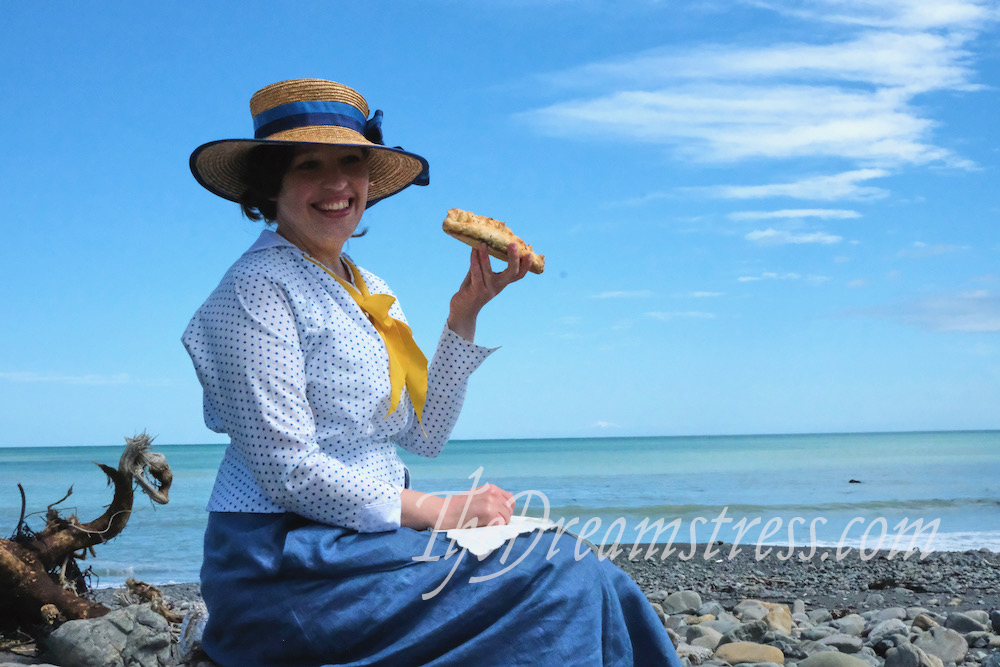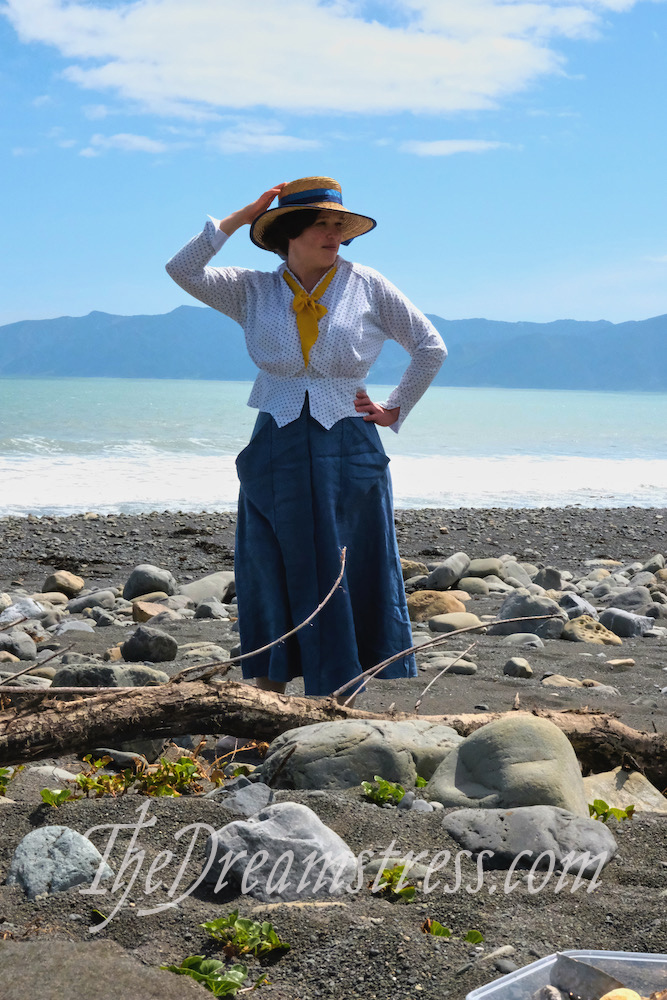This week’s rate the dress illustrates how widespread the global textile trade was in the mid-19th century, and how a dress worn in Europe or the Americas might be made from fabric woven in China. It also brings up an interesting discussion of how Asian fashion and textiles have been perceived, and pigeonholed, in the West.
It’s a discussion that deserves a bit of time, which is why this post took me so long to write!
Most of you loved, loved, loved the Jays Ltd evening dress (or at least loved everything about it except the sash), but the few who didn’t, really didn’t, pulling down the overall rating just a smidge…but not that much!
The Total: 9 out of 10
It’s down .2 from the week before, but still oh-so-good. I swear I’m not purposefully only picking things I think you’ll all love!
This week: a mid-19th century day dress of Chinese silk
This week’s dress is an 1850s day dress made in Britain from silk imported from China.
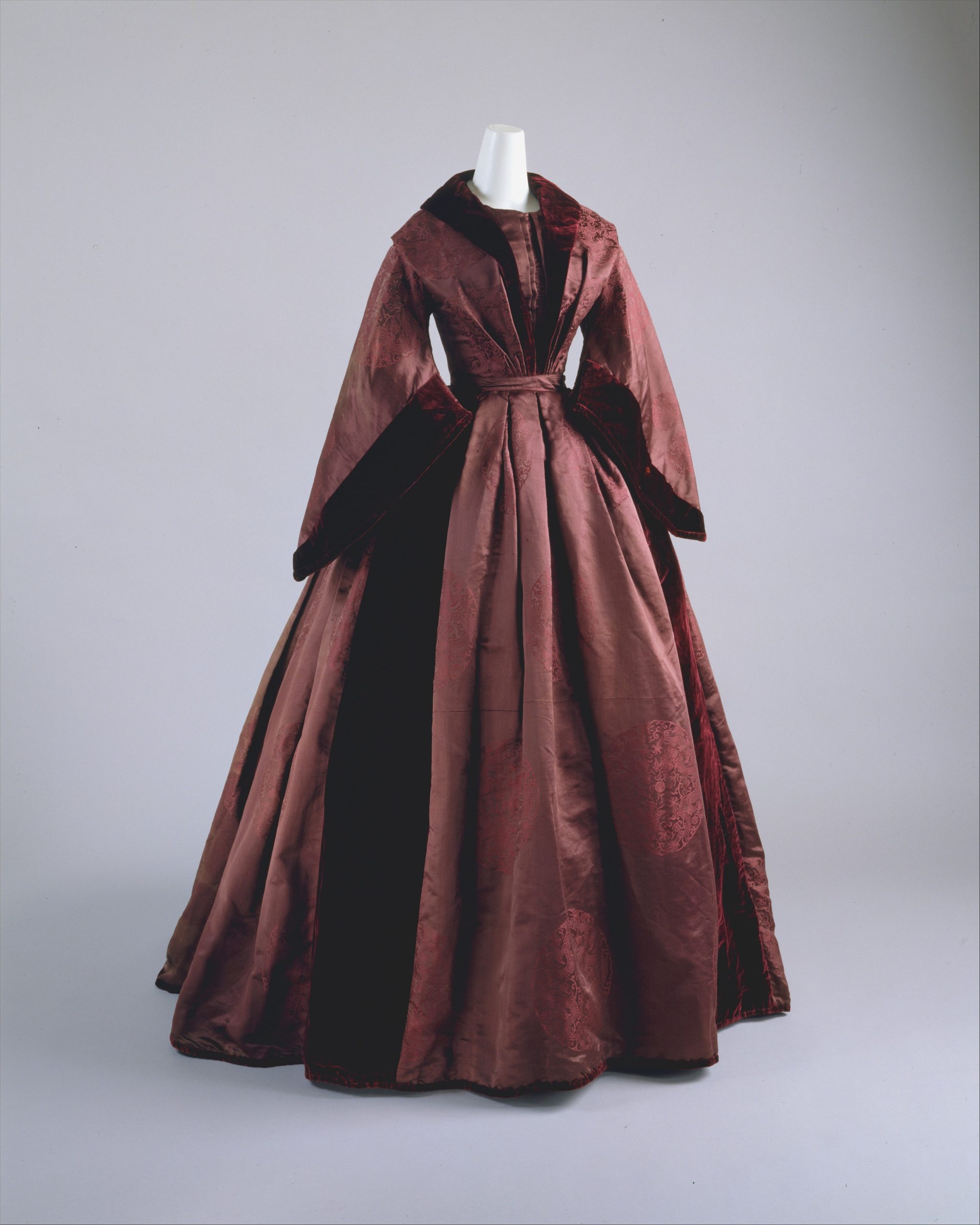
Day Dress, ca. 1850, British, silk, Purchase, Gifts in memory of Paul M. Ettesvold, and Judith and Gerson Leiber Fund, 1994, Metropolitan Museum of Art, 1994.302.1
The bodice of this dress is quite interesting. The velvet collar wrapping down the front is slightly reminiscent of dressing gowns of this period, giving it an almost informal feel that is at odds with the lush fabric and fitted waist of the dress
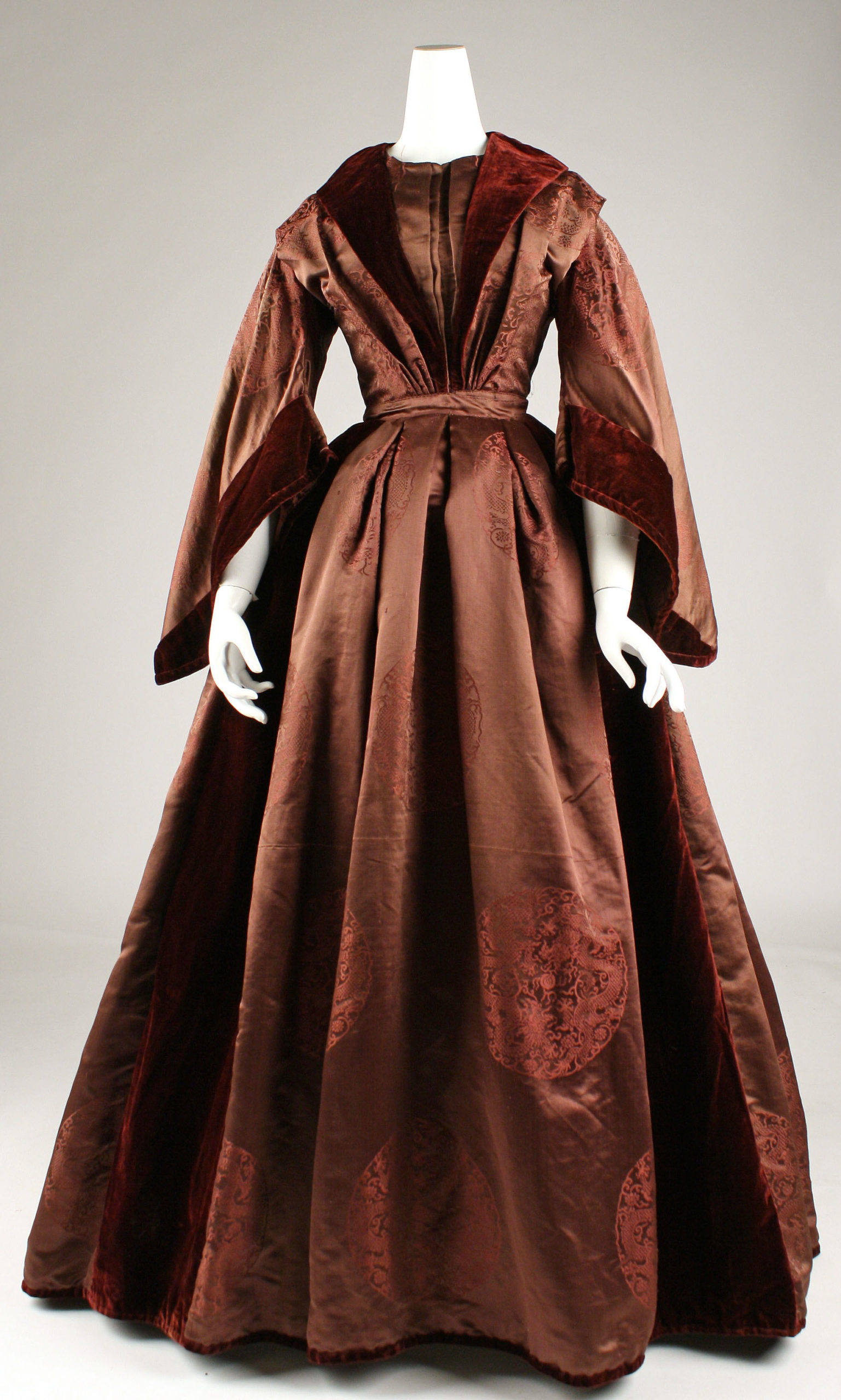
Day Dress, ca. 1850, British, silk, Purchase, Gifts in memory of Paul M. Ettesvold, and Judith and Gerson Leiber Fund, 1994, Metropolitan Museum of Art, 1994.302.1
The lush fabric is also quite interesting. Fabric has been imported from China into Europe for millennia, but few examples used in European clothing in the mid-19th century feature such obviously Chinese motifs.

Day Dress, ca. 1850, British, silk, Purchase, Gifts in memory of Paul M. Ettesvold, and Judith and Gerson Leiber Fund, 1994, Metropolitan Museum of Art, 1994.302.1
In addition to the brocaded dragon roundels on the silk, the fabric has manufacturers marks in Chinese on its selvedges. In the 1850s they were probably sewn into/embroidered on to the selvedges with thread after the fabric was woven, a technique still seen on some high end Chinese and Japanese silks.
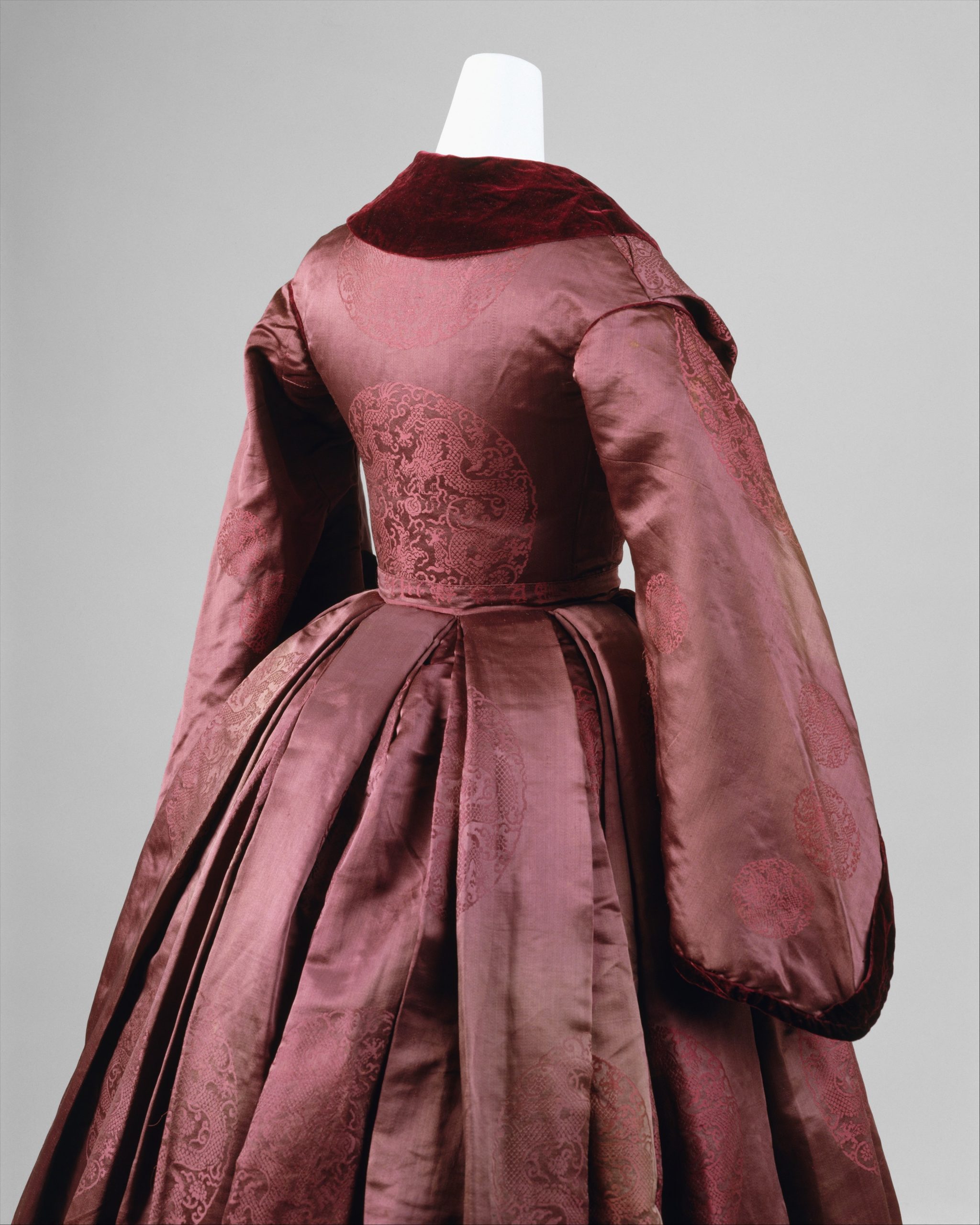
Day Dress, ca. 1850, British, silk, Purchase, Gifts in memory of Paul M. Ettesvold, and Judith and Gerson Leiber Fund, 1994, Metropolitan Museum of Art, 1994.302.1
Although there are many examples of formal garments made from textiles imported from China, India and Japan in the 19th century, there is also a strong link between patterns and designs that had their origins in these countries (and other areas of the world seen as ‘exotic’ to Victorians) and informal, private, intimate, garments. Think of all the examples of Victorian petticoats and corset covers decorated with paisley embroidery. Or tea gowns based on kimono? Dressing robes, banyans, and smoking jackets all had their genesis in banyans imported from India, jackets imported from the Ottoman Empire, and robes imported from China.
In the Victorian imagination, the ‘East’ was often a world of seraglio, concubines, opium dens, and harems. This image was perpetuated by accounts like Leonowen’s The English Governess at the Siamese Court (1870). Although 20 years later than this dress, it similar themes were covered in numerous other novels and bibliographies that influenced her work.
This image contributed to a tendency to use obviously ‘Oriental’ textiles for private garments which still has an impact on fashion today. It’s not a coincidence that the only lingerie store on Wellington’s priciest shopping street has been decorated with an ‘Asian exotic’ ‘geisha’ theme (their words) for the past 12 years (it’s a choice that I was gobsmacked by in 2009, and cannot believe is still in place in 2021).
The longstanding Western practice of pigeonholing Asian fashion as informal (and thus less worthy of being taken seriously) and inherently sensual has a wider social impact as well. For one, it contributes to negative stereotypes where Asian woman are both sexualised, and infantilised.
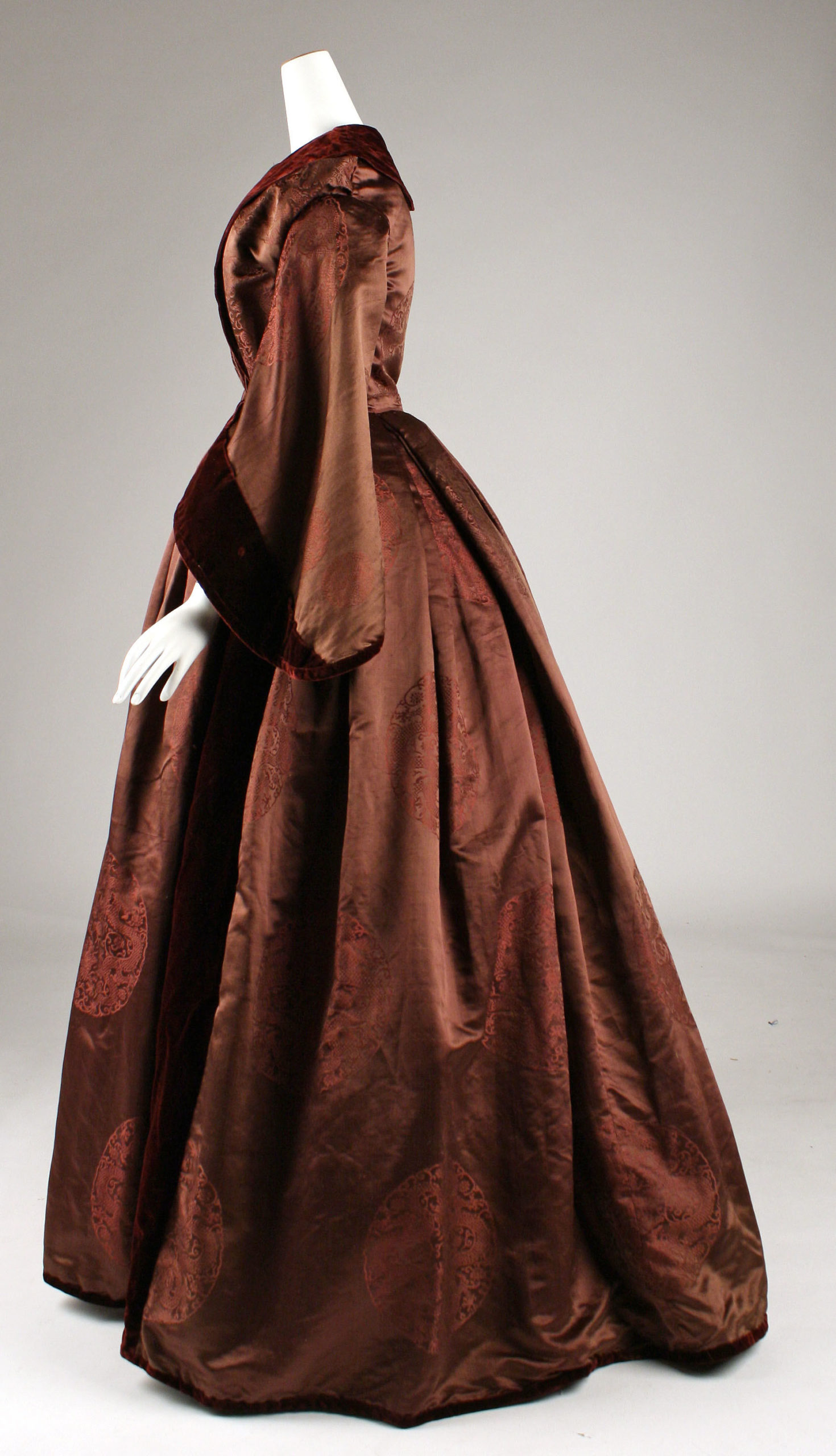
Day Dress, ca. 1850, British, silk, Purchase, Gifts in memory of Paul M. Ettesvold, and Judith and Gerson Leiber Fund, 1994, Metropolitan Museum of Art, 1994.302.1All of this makes this dress particularly intriguing. The combination of a textile with a very obviously Chinese design on a dress with a bodice that reads, at least to the modern eye, as more informal, brings up a number of questions.
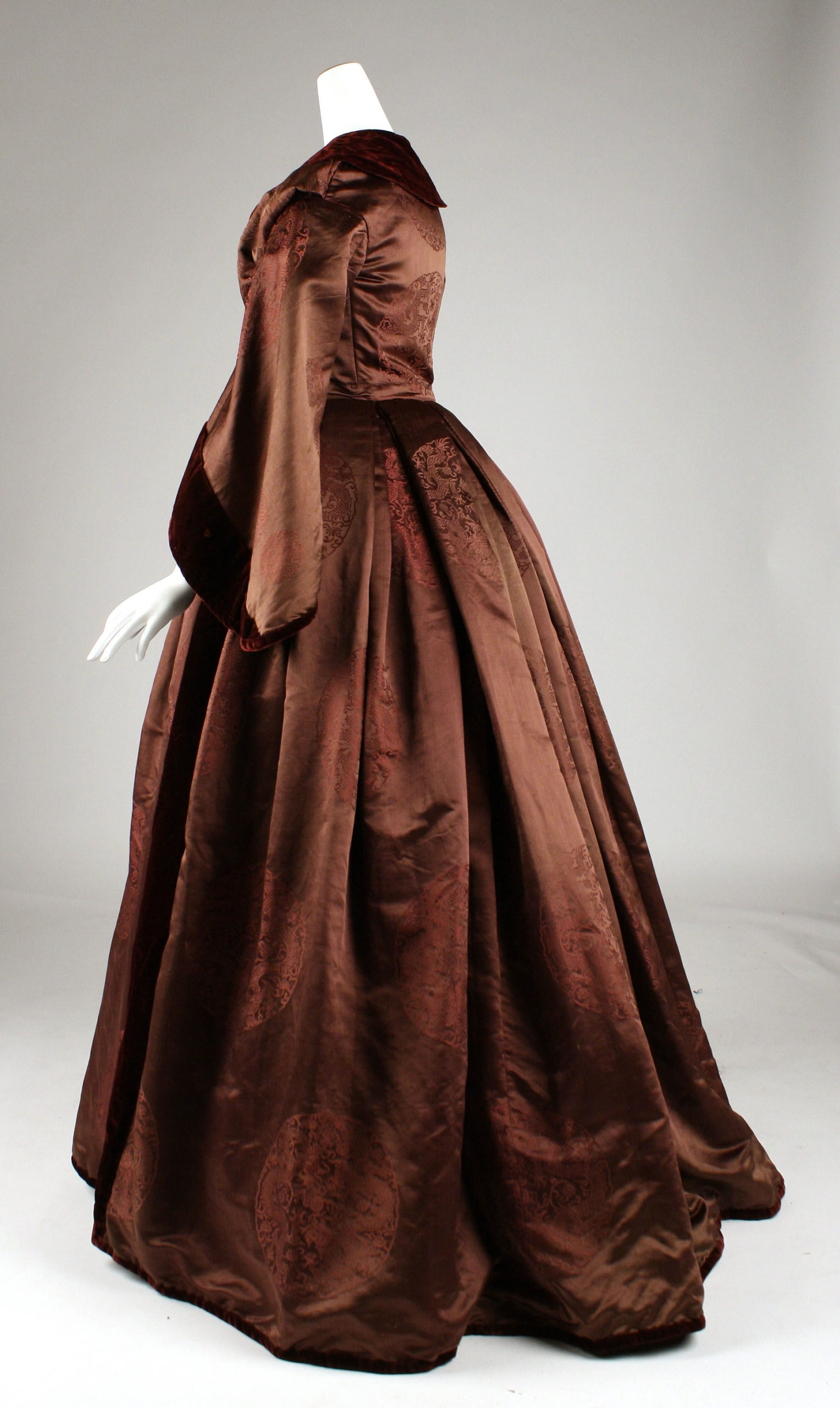
Day Dress, ca. 1850, British, silk, Purchase, Gifts in memory of Paul M. Ettesvold, and Judith and Gerson Leiber Fund, 1994, Metropolitan Museum of Art, 1994.302.1
Is this, despite the decadent textiles, an informal dress? Perhaps a morning dress, just a smidge up from a wrapper? Or are modern impressions colouring our view?
It’s true that the styling in the pictures that read as more brown are not helping the formality: the too-small hoop and too-low mannequin allow the skirt to trail on the floor.
It also pays to remember the dress would have been worn with engageantes (under sleeves, usually in white with lace and embroidery) and a white lace collar, both of which would make it read as more complete.
What do you think of the dress, aesthetically, and otherwise?
Rate the Dress on a Scale of 1 to 10
A reminder about rating — feel free to be critical if you don’t like a thing, but make sure that your comments aren’t actually insulting to those who do like a garment. Phrase criticism as your opinion, rather than a flat fact. Our different tastes are what make Rate the Dress so interesting. It’s no fun when a comment implies that anyone who doesn’t agree with it, or who would wear a garment, is totally lacking in taste.
As usual, nothing more complicated than a .5. I also hugely appreciate it if you only do one rating, and set it on a line at the very end of your comment.
